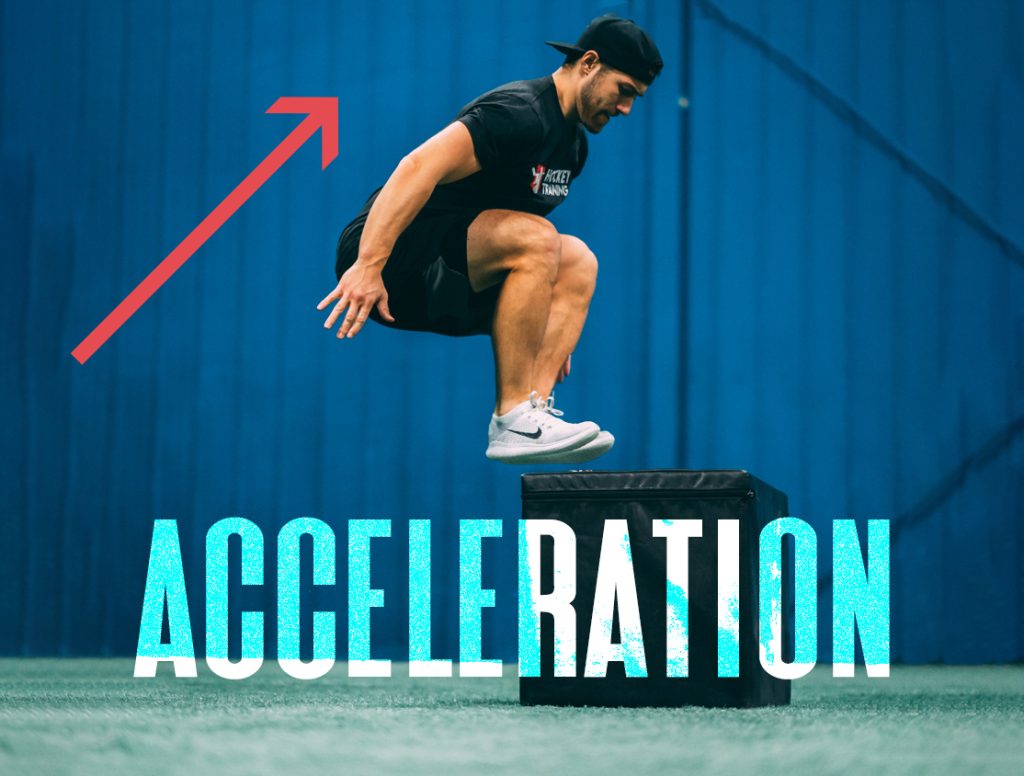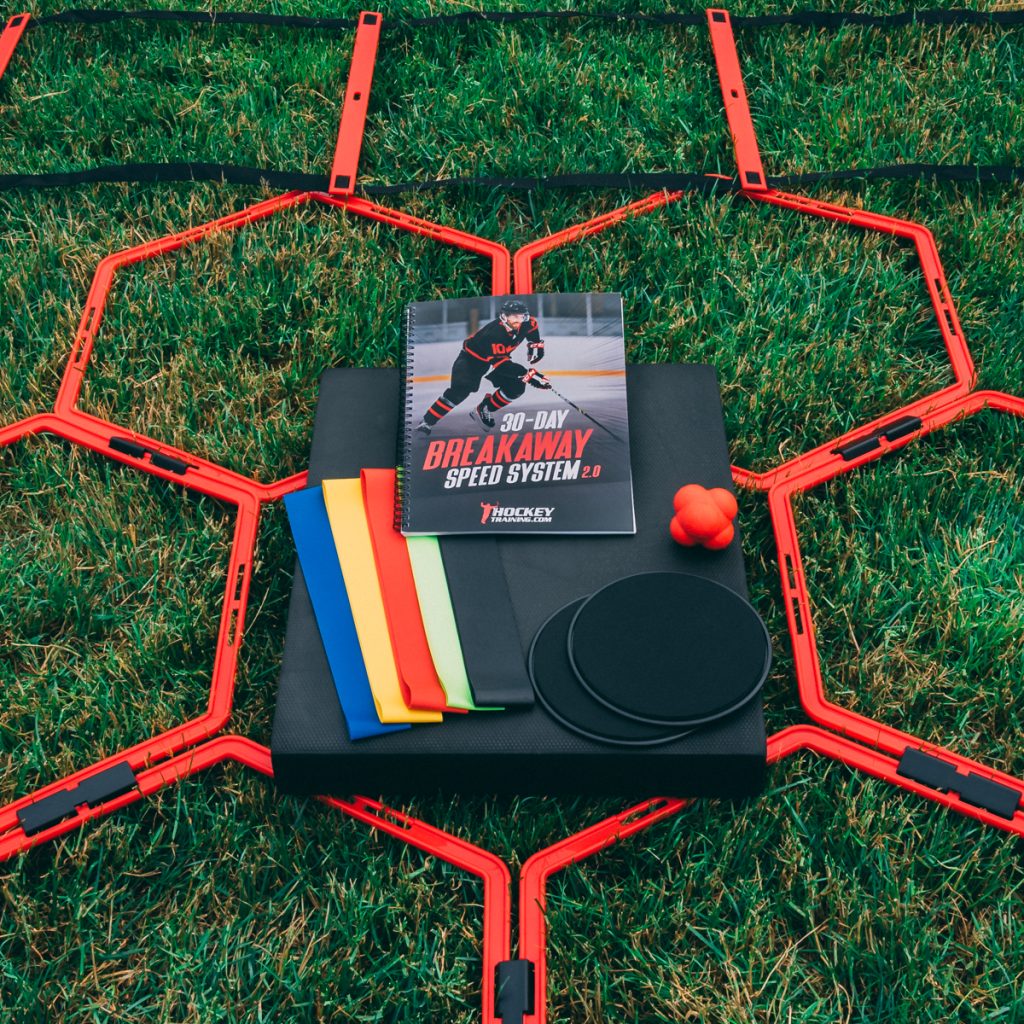Hockey players everywhere are suffering from a similar fate:
They train slow, so they are slow.
It is routine practice for me at the beginning of every off-season to explain to parents, players, and coaches that long-distance endurance running will not contribute to on-ice skating speed.
Hockey is a sport with a long and rich history, and any sport that has been around this long will have “old-school” training methodologies that just won’t die, because instead of reading updated sports science literature, coaches just repeat what their coach told them to do 20 years ago.
Although they mean well, this takes their players way off track with respect to reaching their hockey potential.
This is also why you often see hockey players exercise without seeming to receive any true on-ice benefit from it—and if they do, it’s very little compared to what they expected given their effort level.
This is a sad situation because it’s terrible to find out you have applied a lot of effort in the wrong direction. No matter how hard you train on a misguided program, you will still get sub-par results. Even worse, you might take a few steps backward and get injured, leaving you in a place worse off than when you started.
I know it’s hard to conceptualize the idea that all those miles on the road won’t make you a better hockey player, but they won’t—and they never will. This is the antithesis of hockey-specific training.
Hockey does not entail skating non-stop for miles at a time, and even if you do cover some mileage across an entire game, those miles are accumulated through a series of short-duration sprints interspersed by low-speed/low-intensity glides. Certainly not one slow/medium-paced effort for miles/hours at a time.
Long distance running may get you fit, but there is a difference between “fit” and “fit for hockey.” These are two entirely different things and must be treated as such within your program design.
Hockey-Specific Speed
Most of the time, hockey goes from one full extreme to another: you are either skating all-out or moving quite slowly and/or gliding at the speed earned from the momentum of the short sprint. In other words, lots of explosive movement coupled with plenty of recovery time.
Running long distances does not prepare you for this, and it certainly doesn’t prepare you to be repeatedly explosive over the course of three periods.
Sport-specific training for hockey is exactly what the name suggests: it represents the best possible training intensities and frequencies to maximally mimic the same energy systems you will be using in a game setting. Sport-specific drills will allow you to see a clear translation from training effort to on-ice results.
Something I can tell you from coaching experience is that it is very difficult to make someone explosive, but it is pretty easy to make someone slow. If your goal is to be a slow hockey player, go out for long and slow runs.
You will still be fit, you just won’t be fit for hockey.
The body will always adapt to what you expose it to the most. This is why it’s not a coincidence that no marathon runners are winning sprinting competitions.
Not to mention, a huge problem with long-distance running is the massive increase in the rates of injuries athletes incur. Statistically speaking, 60% of people who take up cross-country running get injured—these are terrible odds if you’re looking to be healthy and in shape for the next in-season.
Breakaway Speed Simplified
I have discussed in great detail the complexities behind hockey speed development in the past (which includes deceleration, lateral power, change of direction, and mental agility); however, today I’m going to be talking about your straightaway speed or “breakaway speed”.
This is referring to those times when you and an opponent are in a foot race down the ice to either score or prevent a goal.
An excellent memory tool to use when moving forward with your hockey breakaway speed development is to train these three performance qualities:
- Starting Speed
- Acceleration
- Top Speed
This gives you what I would refer to as Breakaway Speed Development.
It’s incredibly important to take this approach, because there are many players who have one or two of these qualities, but the players who excel in all three are the ones who truly separate themselves from the pack.
For example, if you have excellent starting speed but not the other qualities, you will be first to the puck, but others will eventually catch you. You won’t have puck control for very long because you lack acceleration and top speed.
If you have excellent acceleration but lack the other qualities, you may never gain puck control in the first place because the hockey player with better starting speed (or what some refer to as first step quickness), beat you to it and either left you in the dust or passed the puck to someone else.
If you only have excellent top speed, you may never get to realize this top speed because even though you’re fast, you take too long to become a threat because your starting speed and acceleration are so slow that the direction of play has already changed.
Yet, if you have all three of these qualities, that’s the deadly Breakaway Speed you see the best hockey players in the world have.
They are explosive out of the gate, their rate of acceleration is so efficient they reach top speed in only a few strides, and their top speed is so fast nobody can catch them.
The Keys to Developing Breakaway Speed
The development of Breakaway Speed involves many performance metrics and a deep discussion of sport-specific adaptations through periodization. But in an attempt to simplify it, you can think about it like this:
Starting Speed: Ankle Strength
Acceleration: Vertical Power
Top Speed: Horizontal Power
Starting Speed demands that the ankles be stable and strong. Training the foot and ankle is one of the most neglected aspects of hockey performance (think ladder drills, dot drills, and balance work). However, it’s critical to include them just like you would any other body part in your training program design, as nearly every single movement you perform out on the ice depends upon the functional movement mechanics of the foot.
Acceleration is dependent upon your ability to produce power upward in an explosive manner (think box jumps, tuck jumps, pike jumps, etc.). Biomechanically, this is because of gravity. As your foot lands during a stride, braking forces push back against you, which is then offset by your forward momentum, which then propels you forward horizontally. But, the only way to continue driving this motion is to drive up vertically to overcome gravity. This is why you see things in the research such as Peter Weyand’s work in 2000 when he found that faster runners created 1.26 times as much force vertically.
Top Speed is when you switch from vertical to horizontal power production (think explosive hip extension work like broad jump variations and kettlebell swings). Once you have overcome the initial gravity pushing you down and you have horizontal momentum working in your favor, horizontal power output adds additional horsepower to this component of speed mechanics.
Biomechanics aside, this is why you see so many different-looking exercises contribute toward the same goal of speed. Ladder drills, tuck jumps, and broad jumps look nothing alike, but you will see their presence in any well-researched speed program design as they each bring their own unique training stimulus to the workout.
Example Breakaway Speed Drills
Starting Speed Drills
LATERAL WEAVES LADDER DRILL
7-DOT SINGLE LEG WITH CENTER JUMP
CARIOCA SPRINT
SUPERMAN T-STAND ON FOAM PAD
Acceleration Drills
TURNOVER TRANSITION SPRINT
LATERAL TRIPLE DEPTH HURDLE HOP
PUSH UP + FORWARD HURDLE HOP + SPRINT
PARTNER REACTION BALL DROP AND CATCH
Top Speed Drills
BREAKOUT SPRINT
BROAD JUMP OVER HURDLE
FORWARD SKATER BOUNDS INTO SPRINT
ICKY SHUFFLE INTO DOUBLE BROAD JUMP
The Revolutionary Breakaway Speed Kit™
If you’re a serious hockey player who wants to reach their hockey dreams and understands that the acquisition of these three qualities is the key to blowing by your competition, then the brand new Breakaway Speed Kit™ is exactly what you need.
The above information you learned today is already filtered into an NHL-caliber program and is your complete “done for you” solution to explosive speed development.
The all-new Breakaway Speed Kit™ utilizes the best training tools alongside the 30-Day Breakaway Speed System and was designed to take all of the guesswork out of it so you can use this methodology in the exact same way as an NHL hockey player.
This complete hockey toolkit includes the Edge Work Enhancer Ladder, Explosive Speed Rings, Hockey Reaction Ball, Athletic Movement Bands, Balance Foam Pad, Skater Sliders, and the brand new 30-Day Breakaway Speed System that you can perform no matter what age you are or what access to equipment you currently have.
Remember, if your hockey performance isn’t great right now, it’s not your fault. We learned that above from so many coaches passing down old and outdated training styles.
Real progress comes from real hockey-specific training, and this type of plateau-busting programming only comes from a hockey performance specialist who is able to break the status quo and get you the exact program you need as a dedicated and hungry hockey player.
You can’t find hockey-specific results in a non-hockey-specific program, and this is something rarely talked about in the hockey world.
Most people just exercise, but after reading this article you can start to see how “exercising” makes up a very small portion of what true training you should be doing to get NHL-like results.
The days of guessing and hoping you will be a better hockey player are over; get instant access to the 30-Day Breakaway Speed System here so you can leave fans, coaches, and scouts’ jaws on the floor with how much progress you have made in a single month of training.
Final Thoughts
The hockey players who dominate the foot races are the ones who bring together all three speed qualities in seamless athletic motion out on the ice.
Yes, having an aerobic base matters, but you still need to train for the sport. Explosive training yields explosive results.
The real key lies in the implementation of all these qualities in order to create a hockey-specific approach, something I have written about in obsessive detail in all of my articles in the past—not to mention, having trained thousands of hockey players to achieve these results in real life as well.
The hockey players who want to get faster and get in amazing on-ice condition need to train in a way that best replicates the exact demands of competition. Check out the speed kit here if you’re serious about getting the job done and moving your game up to the next level.





